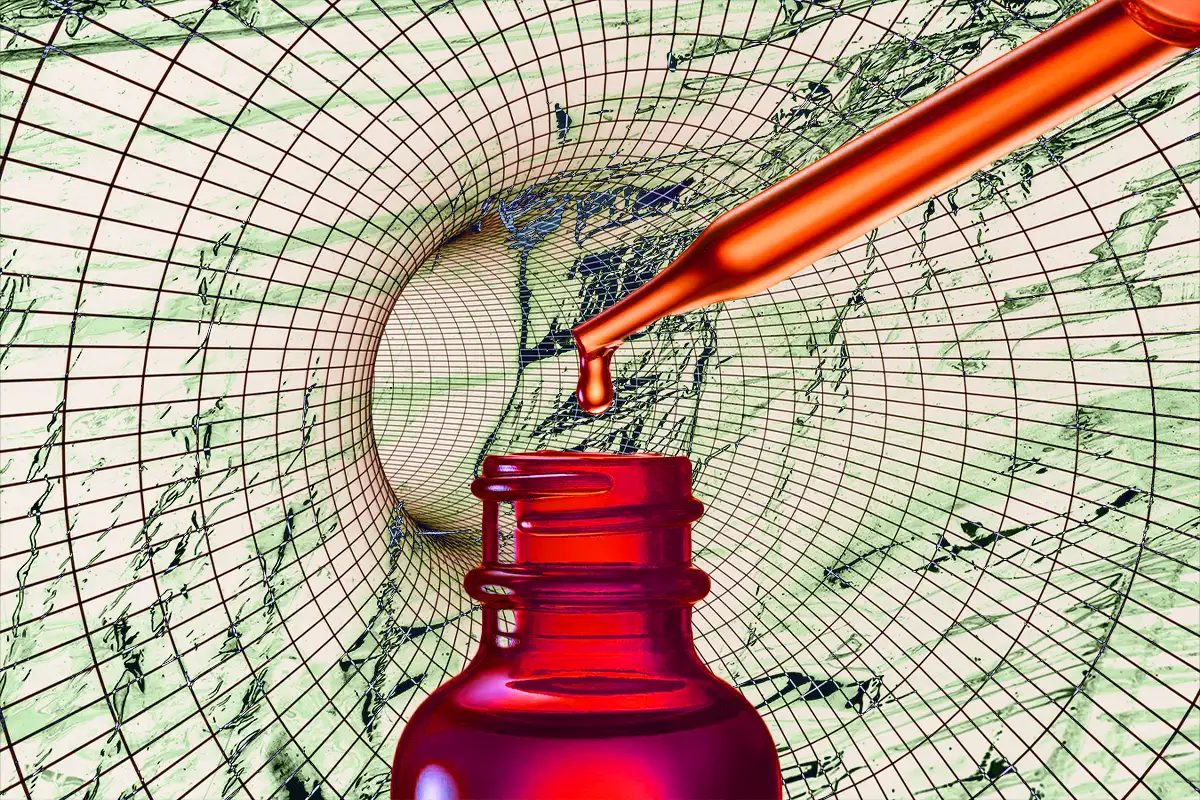A recent study has revealed that small doses of LSD can heighten the intricacy of brain activity. This discovery is said to have considerable implications for advancing our understanding of consciousness and the potential for therapeutic uses of LSD, PsyPost reports.
Published in the journal Neuropsychopharmacology, the study showed that LSD significantly augmented neural complexity and influenced brain wave patterns linked to various states of consciousness in ways that cannabis and stimulants, like methamphetamine, did not.
For reference, neural complexity is essentally a measure of how intricate the patterns of activity are in your brain. Think of it as a way to gauge how “rich” your mental experience of life is at any given moment throughout the day. When you hear the sound of wind through the trees, for instance, does it stimulate feelings of wonder and awe, or does it make your brain feel like TV fuzz? Kidding. But, when you have high neural complexity, it means your consciousness is buzzing with a diverse range of thoughts and sensations. Lower levels of neural complexity are associated with reduced consciousness, such as when you’re sleeping or under the influence of certain sedatives.
READ: FDA Grants New LSD Drug “Breakthrough Therapy” Status for Generalized Anxiety Disorder
The focus on neural complexity in this study ties back to a theory called the “entropic brain hypothesis,” which suggests that the level of complexity in the brain’s activity reflects how rich and varied our conscious experiences are, according to Robin Carhart-Harris for NIH. Neuroscience shows that psychedelics increase the brain’s entropy level, often resulting in breaking down, or “rewiring,” rigid patterns of thinking that are often at the root of unhelpful behaviors.
Researchers dug into data from three different clinical trials carried out at the Human Behavioral Pharmacology Laboratory at the University of Chicago. They looked at how psychoactive substances like LSD, THC, and methamphetamine stacked up against placebos. There were 73 study participants in the study
“I want to know how humans gain deeper insight and observation into themselves, life, and being during altered states of consciousness,” said Conor H. Murray, a study author and an assistant project scientist at UCLA and the founder of Psynautics.com, PsyPost reports. “Since I’m particularly interested in the neurobiological basis of consciousness and altered states, I decided to analyze all three studies to determine whether a neural correlate of consciousness was affected by the LSD microdoses versus the THC doses versus the meth doses.”
How to Grow Shrooms Bundle
Take Both of Our Courses and Save $90!
For LSD, participants were given doses of 13 or 26 micrograms. This is a significantly lower dose than what elicits a traditional psychedelic experience, which is usually in the ballpark of 100 to 150 micrograms. Acid is strong, though, and people often say they “feel” something above 15 micrograms.
Researchers gave other study participants doses of THC, the intoxicating compound in cannabis. In doses of 7.5 milligrams and 15 milligrams. These doses were designed to be small—smaller than recreational doses—but enough to make people who don’t regularly consume cannabis feel “tipsy,” for lack of better terminology.
Finally, the researchers gave the last cohort of participants doses of methamphetamine, starting at 10 milligrams and up to 20 milligrams (typical Adderall doses, amiright?).
These amounts were picked because past studies found they’re enough to make people feel different and see changes in their behavior and brain activity without being totally incapacitated.
During each session, the study participants were hooked up to electroencephalography (EEG) devices, specifically focusing on neural complexity through the Limpel-Ziv complexity measure, to record brain activity. The goal of this measurement was to observe the diversity of brain patterns in each study participant in hopes of giving researchers a window into how drugs impact our neural complexity. Along with the EEG readings, participants provided self-reports on their mood states and perceived drug effects at various points throughout the session.
LSD was the only drug among those administered in the study that increased neural complexity. It points to LSD’s unique effects on brain function, possibly explaining the substance’s ability to expand consciousness. The boost in neural complexity also coincided with a dip in delta and theta brain waves, which are typically associated with subconscious states of being, such as sleeping.
The drop in delta and theta power went hand in hand with participants reporting feelings of elation, suggesting a link between the altered brain activity induced by LSD and the subjective experience of increased joy or euphoria.
What was particularly fascinating about these shifts in brain activity was that they occurred with just mini doses of LSD—amounts significantly below what typically induces a psychedelic experience.
“[E]ven very low doses of LSD might ‘expand consciousness’ as defined by a hotly debated theory of consciousness,” Murray told PsyPost. “We still don’t know whether this is a good thing or not — we haven’t found out yet how this brain change might actually affect brain or mental health or cognitive function.”
Interestingly, while THC and methamphetamine did alter brain activity, their impacts didn’t echo the impact of LSD. THC led to a drop in alpha power, which was linked to changes in consciousness levels, but it didn’t boost neural complexity like LSD. Methamphetamine, meanwhile, triggered reactions typical of a stimulant, but didn’t significantly alter neural complexity or states of consciousness the way acid did.
READ: Tripping on LSD in Isolation Tanks and Talking to Dolphins
“The major caveat was that we didn’t ask participants about subtle changes in consciousness, like whether their sense of smell was enhanced, or whether they noticed intricacies after the microdoses of LSD that they didn’t notice on placebo,” Murray noted. “It’s possible that the increased entropy would be related to these subtle changes.”
“But since we only asked about large altered states effects, and stimulant effects, etc., none of that showed any association to the increased entropy, which begs the question as to whether entropy can increase even when consciousness is not altered at all – of course, the caveat again being that we did not have every subtle shade of minor alterations to ask about.”
These insights create an argument for the healing benefits of consuming lower doses of psychedelics. Additionally, it’s crucial to continue to study processes underlying the noted rise in neural complexity and what this means for consciousness and cognitive function.
“The immediate next step is to determine whether the increased neural complexity explains the improved behavioral responses we found in a facial recognition task after the low doses of LSD in the same study,” Murray told PsyPost. “Or maybe the increased complexity actually hindered those responses, we don’t know.”
“The real long-term goals are to understand what brain changes are occurring when people have meaningful insights and observations, so we can try to target these more specifically to refine and improve our ability to have meaningful therapeutic effects and scientific observations with high signal-to-noise ratio.”

DoubleBlind is a trusted resource for news, evidence-based education, and reporting on psychedelics. We work with leading medical professionals, scientific researchers, journalists, mycologists, indigenous stewards, and cultural pioneers. Read about our editorial policy and fact-checking process here.

DoubleBlind Magazine does not encourage or condone any illegal activities, including but not limited to the use of illegal substances. We do not provide mental health, clinical, or medical services. We are not a substitute for medical, psychological, or psychiatric diagnosis, treatment, or advice. If you are in a crisis or if you or any other person may be in danger or experiencing a mental health emergency, immediately call 911 or your local emergency resources. If you are considering suicide, please call 988 to connect with the National Suicide Prevention Lifeline.



